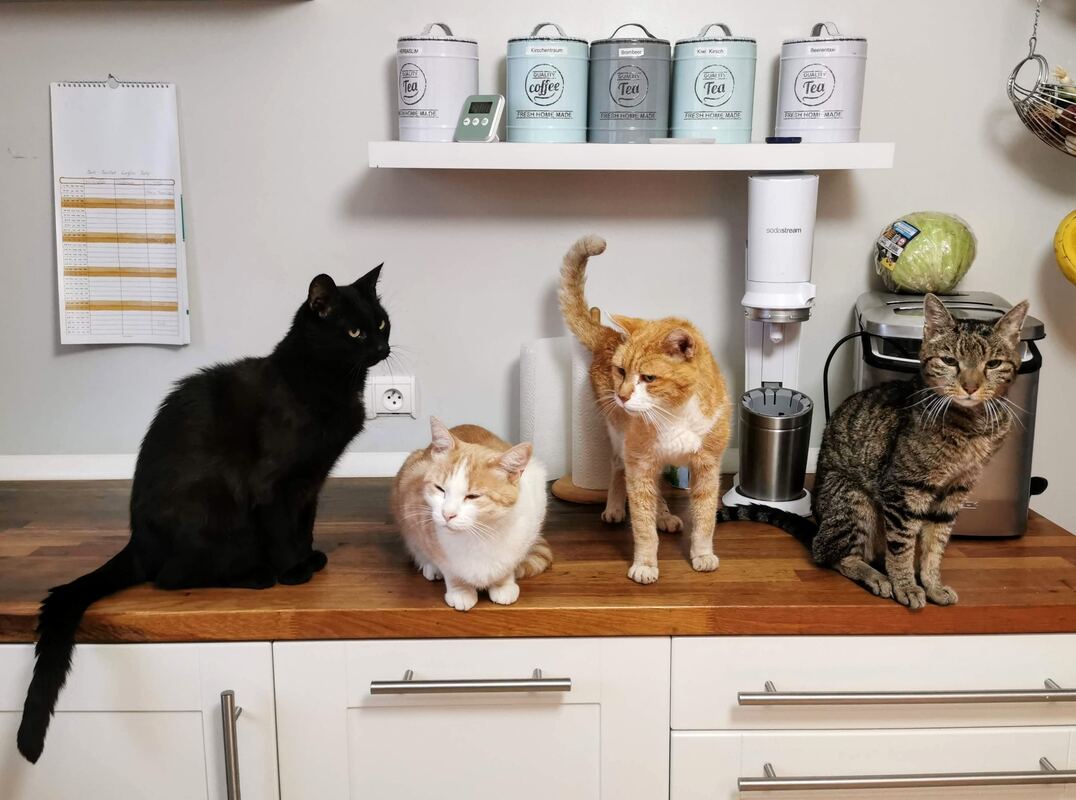Introducing Cats
Introducing cats to each other requires patience, careful planning, and a gradual approach to help them become accustomed to each other.
Here are some steps you can follow:
Calming products:
Adding things such as FELIWAY (pheromones) and/or Zylkene capsules can help reduce stress at home for each cat - both the original cat and the new cat.
Isolate the New Cat:
Keep the new cat in a separate room with all the necessary amenities (food, water, litter box, toys, and a comfortable bed). This allows the cats to get used to each other's scent without direct interactions.
Exchange Scents:
Swap bedding or toys between the two cats to familiarize them with each other's scent. This helps them get used to the idea of another cat in their environment.
Feeding Time Introduction:
Feed both cats on either side of the closed door, gradually moving their bowls closer over time. This positive association with each other's presence can help create a connection.
Visual Introduction:
Allow the cats to see each other through a cracked door or a baby gate. Monitor their reactions. If they seem calm, reward them with treats or playtime.
Switch Territories:
Swap the cats' locations, allowing them to explore each other's spaces while the other is confined. This helps them become familiar with each other's scent in their primary living areas.
Supervised Meetings:
When they show curiosity rather than aggression under the door or gate, it's time for a supervised face-to-face meeting. Keep the initial meetings short and positive. Use treats and toys to create positive associations.
Gradual Interaction:
Allow the cats to spend gradually increasing amounts of time together under supervision. Be prepared to intervene if there is any sign of aggression or stress.
Provide Vertical Space:
Cats feel safer when they have vertical spaces to escape to. Install cat trees, shelves, or other vertical spaces to allow each cat to have their own territory.
Have Separate Resources:
Ensure each cat has its own food and water bowls, litter boxes, and sleeping areas. This helps prevent resource guarding and reduces the chances of conflicts.
Monitor Behavior:
Keep a close eye on the cats' behavior during the entire introduction process. If any signs of aggression or stress occur, slow down the introduction process and give the cats more time to acclimate.
Remember that the introduction process can take time, and each cat is unique.
Be patient and let them dictate the pace of the introduction.
If you encounter significant issues, consider seeking advice from a professional qualified animal trainer or behaviour veterinarian.
Here are some steps you can follow:
Calming products:
Adding things such as FELIWAY (pheromones) and/or Zylkene capsules can help reduce stress at home for each cat - both the original cat and the new cat.
Isolate the New Cat:
Keep the new cat in a separate room with all the necessary amenities (food, water, litter box, toys, and a comfortable bed). This allows the cats to get used to each other's scent without direct interactions.
Exchange Scents:
Swap bedding or toys between the two cats to familiarize them with each other's scent. This helps them get used to the idea of another cat in their environment.
Feeding Time Introduction:
Feed both cats on either side of the closed door, gradually moving their bowls closer over time. This positive association with each other's presence can help create a connection.
Visual Introduction:
Allow the cats to see each other through a cracked door or a baby gate. Monitor their reactions. If they seem calm, reward them with treats or playtime.
Switch Territories:
Swap the cats' locations, allowing them to explore each other's spaces while the other is confined. This helps them become familiar with each other's scent in their primary living areas.
Supervised Meetings:
When they show curiosity rather than aggression under the door or gate, it's time for a supervised face-to-face meeting. Keep the initial meetings short and positive. Use treats and toys to create positive associations.
Gradual Interaction:
Allow the cats to spend gradually increasing amounts of time together under supervision. Be prepared to intervene if there is any sign of aggression or stress.
Provide Vertical Space:
Cats feel safer when they have vertical spaces to escape to. Install cat trees, shelves, or other vertical spaces to allow each cat to have their own territory.
Have Separate Resources:
Ensure each cat has its own food and water bowls, litter boxes, and sleeping areas. This helps prevent resource guarding and reduces the chances of conflicts.
Monitor Behavior:
Keep a close eye on the cats' behavior during the entire introduction process. If any signs of aggression or stress occur, slow down the introduction process and give the cats more time to acclimate.
Remember that the introduction process can take time, and each cat is unique.
Be patient and let them dictate the pace of the introduction.
If you encounter significant issues, consider seeking advice from a professional qualified animal trainer or behaviour veterinarian.

